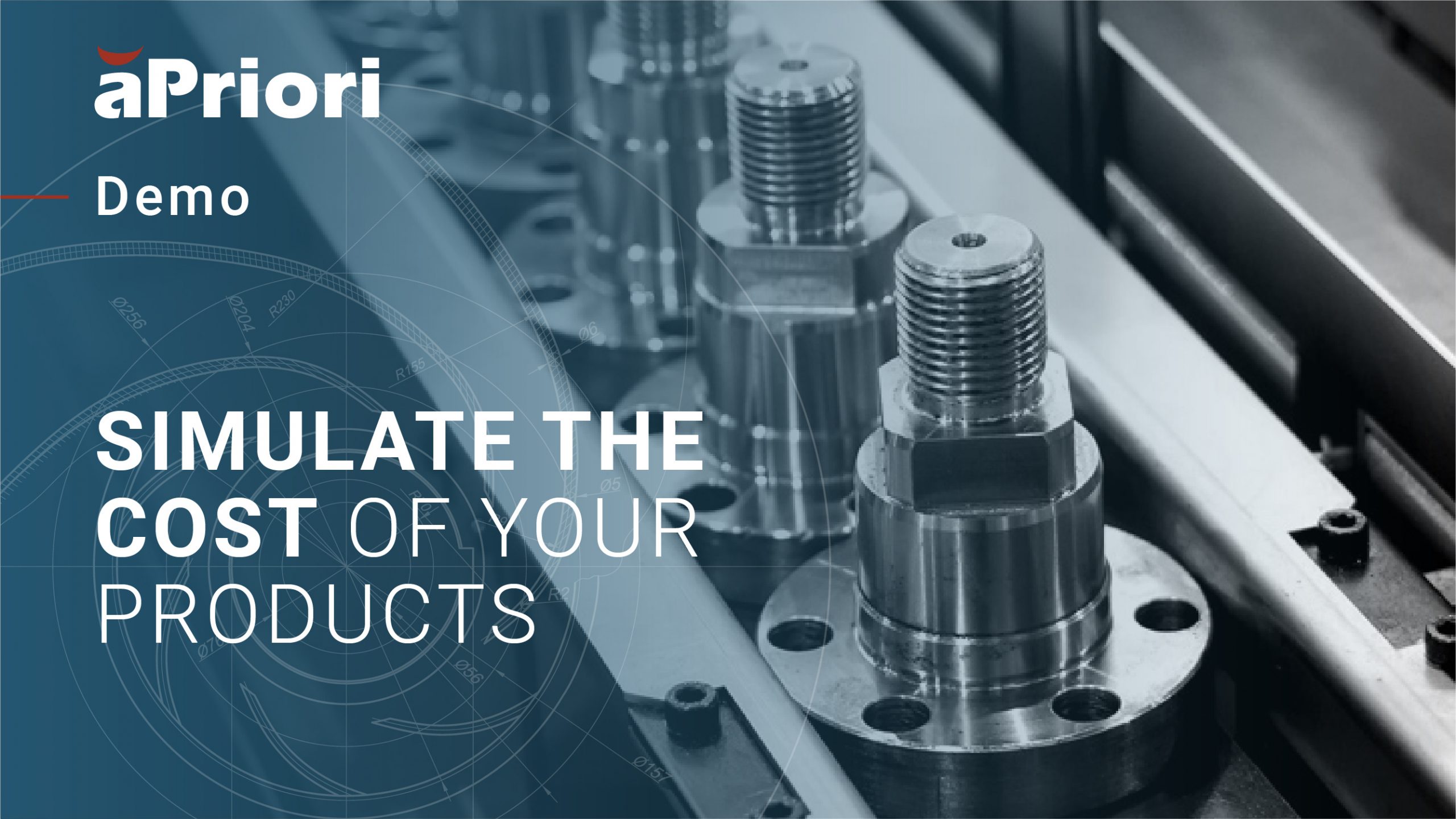Using Manufacturing Software to Simulate and Streamline Product Costs
In this demo, we will simulate the functionality of pricing manufacturing costs with aPriori.
Starting with a 3D CAD file (this can be native CAD or a transfer format) I’ll open within aPriori. Now, I just need to specify a few values before running the manufacturing simulation. The first is the process group, in this case: sheet plastic covers thermal forming. Next, is the virtual production environment: where is this part going to be made? aPriori has out-of-the-box regions, but a new digital factory can also be configured to align with your own internal capabilities: including machines, process routings, labor rates, overheads, and so forth. Then I can add in any relevant secondary processes, for example, screen printing and packaging. I select material and additional materials, which can easily be configured, and finally specify the production run for the part.
aPriori’s cost estimating software analyzes the 3D model, breaks it down into individual geometric cost drivers, and builds a cost from the bottom up. Once the simulation is complete, the part Summary tab displays an overview of different categories, such as component information, cost percentage by category, and cost percentage by process. These numbers are driven by the manufacturing process routing. aPriori evaluates multiple potential routings and then selects the most cost-effective process and machine in real-time.
Easy to Configure Quoting Software
This part is a single cavity drape forming over a positive mold and then trimming the excess with a router station. Setup options for machines can be modified on a case-by-case basis while configured for internal preference. For example, default mold material is aluminum 6082 with movable inserts. I can also go into more detail regarding labor times and cycle times. Custom outputs show relevant process information such as the Draw Ratio and total forming cycle time. Any line with a pencil icon can be dynamically updated and will adjust cost accordingly. The formulas behind manufacturing times can be viewed and configured as needed. The cost details view allows me to review variable costs, period costs, and more. Margin percentage, SG&A values and overhead can all be configured to reflect your standard values and can also be adjusted on an individual part to account for expedites or other special order requests. All the information I just reviewed can be exported as an Excel spreadsheet report. Here is an out-of-the-box example, but this report can be configured to include as much or as little information you want to share with a potential customer.
So what if I have a big package of 100 or so parts? aPriori has a built-in tool called Bulk Costing and Analysis. I’d point to a directory of part files, and specify my inputs just like on an individual part, and aPriori’s manufacturing cost estimating software will propagate a table of all of those parts. I can then export this table to Excel to make volume and material changes for different parts. Once complete, I start the analysis and aPriori will automatically run through all of the parts. The automation of aPriori’s cloud-based or on premise software solution helps increase the accuracy, consistency and speed in completing quotes and provides rich details to engage in meaningful conversations with potential customers.
Product design, procurement and supply chain, and business operations teams in the manufacturing industry all rely on aPriori’s cost estimating software for quality control, scalability, and increased time to market and increased profit margins.


